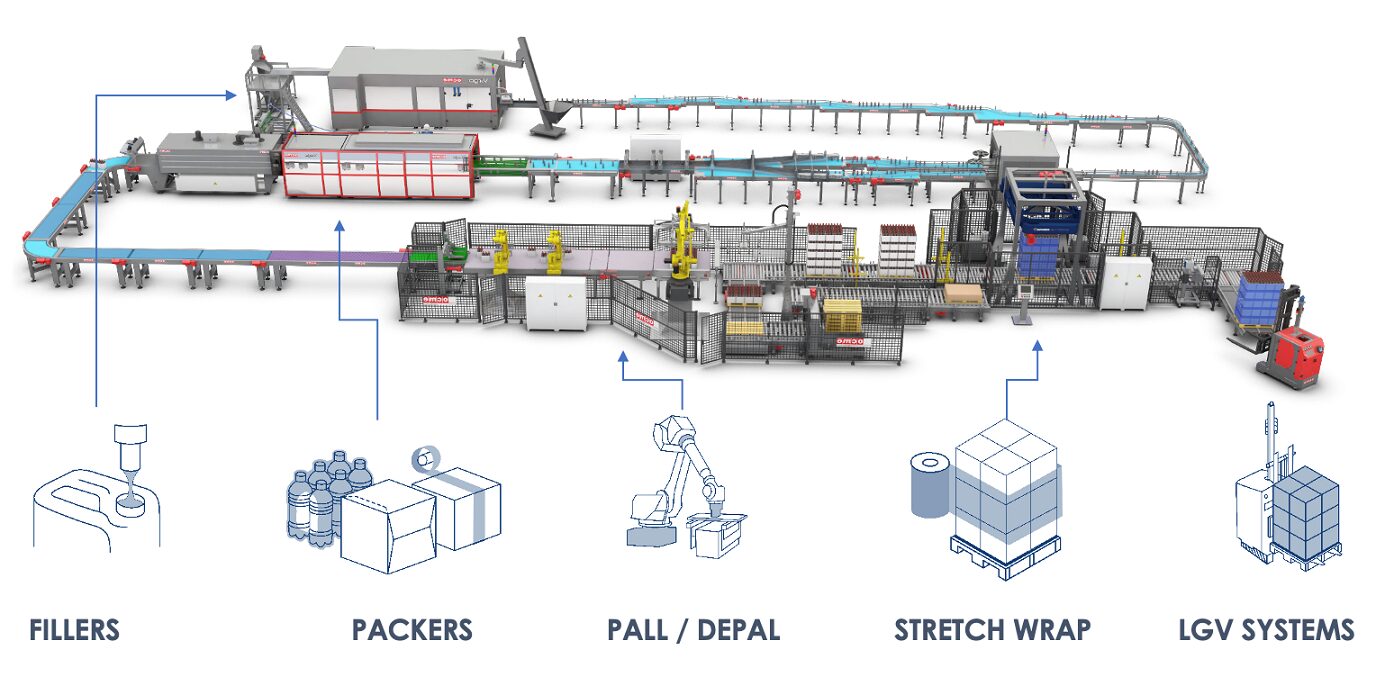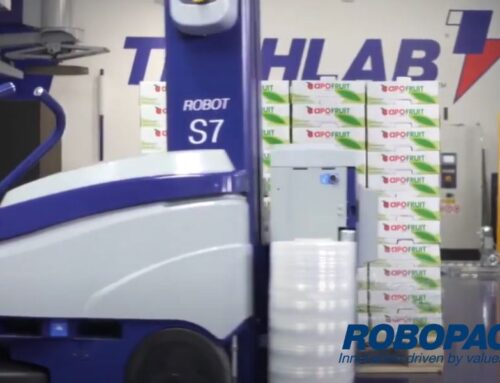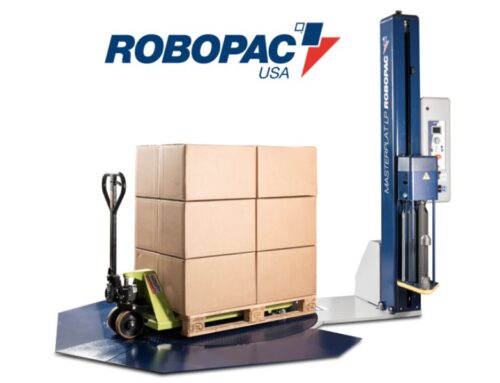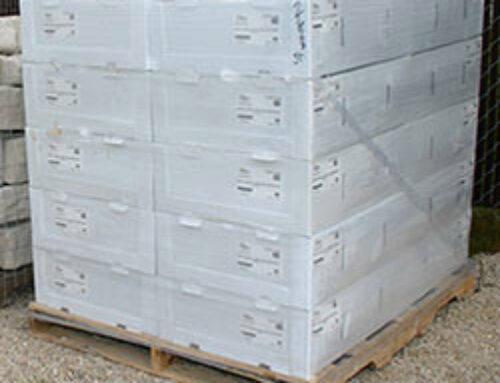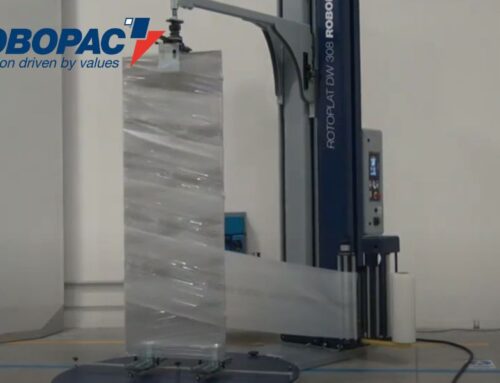An organized layout means an organized workflow. An organized workflow means greater efficiency and productivity for your secondary packaging line. Of course, creating the perfect layout is easier said than done. With internal processes, industry innovations, and customer demands constantly changing, it’s easy to ignore the needs of your warehouse floor until you’re already dealing with serious delays and bottlenecks.
If you’re proactive with your strategy, though, you can arrange your facility to empower the most efficient operations possible. Promote faster, more effective packaging lines with these ways to optimize the layout of your warehouse floor.
Consolidate Wrapping Stages
You can save both time and space by consolidating various stages of your secondary packaging process. One example is concurrent stretch wrapping. By investing in automatic palletizers that feature concurrent stretch wrapping options, you can palletize and wrap product loads in a single step. This two-in-one solution means you don’t have to set aside floor space for two separate machines. It also streamlines the packaging process and reduces the amount of movement and handling that product loads experience as they move through your workflow.
Built-in pallet scales are another way to combine multiple steps in your packaging line. You can purchase stretch wrapping equipment, like turntable wrappers that feature a built-in weighing system, so you won’t need a standalone weighing station taking up space in your facility. Stretch wrappers with weighing systems also help you accurately measure every product load that moves through your facility. This can help you manage shipping costs and avoid supply chain fines from overweight pallet loads.
Mobilize With Portable Stretch Wrappers
Portable stretch wrappers like Robopac USA’s Robot S7 offer a more compact wrapping solution than other traditional stretch wrap equipment. With these flexible, battery-powered solutions, you can take the stretch wrapping process to the pallet rather than the other way around. This eliminates the need to carry your product loads back and forth throughout your facility. It also offers a fast, flexible solution for heavy, long, wide, or awkward pallet loads that are hard to wrap with stationary turntable or rotary arm stretch wrapping solutions. With portable stretch wrappers, you can cut back on large wrapping workstations while keeping your packaging line flexible, efficient, and productive.
Take Advantage of Modular Design
Modular design breaks a large system down into smaller parts, allowing you to pick and choose what you need to suit your facility layout and meet your productivity needs. Robopac USA’s automatic palletizer solutions prioritize modular engineering to deliver greater control and flexibility without the need for expensive customization.
By offering a range of common components, we help customers streamline design, delivery, and implementation. Plus, the modular design leaves room for growth and future changes or additions, creating a scalable solution that serves you both now and in the future of your business.
Invest in Multi-Function Solutions
Packaging lines that do one thing very well can be efficient, but they don’t make good use of your floorspace. That’s why you want a flexible secondary packaging system that can handle multiple product types with ease.
This is particularly true when investing in case packer machines. Multi-format case packers can handle a wider variety of product types in a single workflow, creating a system that saves space as well as time. This ability to handle more variety also lets you grow with your customers or take on new clients. Make sure you choose equipment that offers quick and easy changeover processes to avoid bottlenecks and keep products moving smoothly through your facility.
Use WMS Data
A warehouse management system (WMS) offers visibility over your entire operation. With the data you gather, you can track how products move through your packaging lines. This lets you see what’s moving efficiently and what’s slowing down. You can also monitor where workflow paths double back on themselves or where products stall or get lost throughout the workflow. With this information, you can make strategic decisions about your layout and create an intuitive and logical floor plan based on your specific workflow needs.
Keep High-Traffic Areas Open
You may want to save space by making narrower travel lanes or smaller workstations. While this gives you more square footage, it doesn’t necessarily optimize your layout. Narrower paths lead to congestion or even accidents, especially if they’re in high-traffic areas. Additionally, if workstations don’t have enough room, employees end up waiting on each other or crossing over each other’s paths too much. The resulting bottlenecks aren’t worth the square footage you can save.
Keep areas that see a lot of high-volume work clear and open. Make sure high-traffic pathways are clean, well-lit, and free from tripping hazards to prevent accidents and congestion.
Prioritize Scalable Solutions
Short-term layout solutions are great for a while, but they can create other problems down the road if you’re not planning for long-term growth. Scalable solutions help you continuously optimize your warehouse even as your business grows. A flexible layout helps you adjust without sinking a significant amount of time and money into brand-new solutions. By prioritizing scalability in your workflow, you can always have the means to meet new requirements, standards, and business goals as you evolve over time.
Gather Employee Feedback
Data and management knowledge are invaluable tools, but they don’t give you the on-the-ground perspective that your employees have. Gather feedback from workers and partner with teams at every level to create an optimized layout for your warehouse floor that works for every role in your facility. After all, employee insight is the best tool when you want solutions that actually work in practice rather than just looking good on paper.
Partner With a Leading Secondary Packaging Supplier
No two facilities are the same. If you want to optimize your layout to save space and boost efficiency, you need a solution that meets your specific needs and integrates seamlessly with your current systems and processes. Partnering with industry experts who have experience designing and implementing secondary packaging solutions will help.
At Robopac USA, we dedicate ourselves to helping businesses maximize their space and reach new heights of efficiency and productivity. Learn more about how our secondary packaging equipment can help you optimize your operations when you work with our team today.


